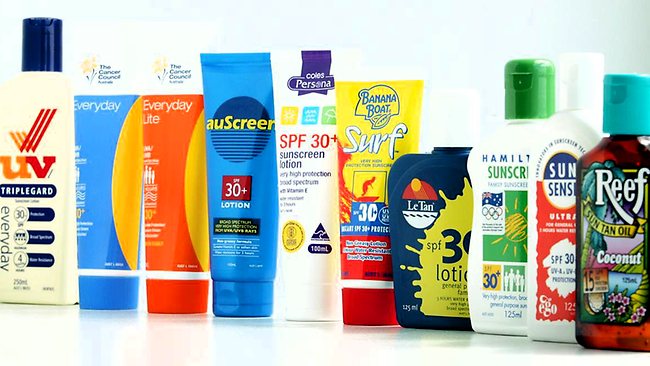One only has to type ‘sunscreen’ into the Google search bar to be met with popular queries such as: ‘sunscreen causes cancer’, not to mention the pages of search results espousing the supposed dangers of the cream’s ingredients.
Tess Gibney
Prevalent concerns about hazardous nanoparticles of titanium dioxide and zinc oxide abound, as well as the potential for certain sunscreens to adversely affect skin and alter hormones. So what gives? And are any of these fears founded by evidence?
There are two primary types of sunscreen, both of which carry their own set of supposed risks. The first, mineral sunscreen, contains zinc oxide and titanium dioxide, and works by deflecting UVA rays. The second, chemical sunscreen, is composed of various chemicals including dioxybenzone, oxybenzone and octinoxate (to name a few), and functions by absorbing UV rays before they damage the skin.
Mineral sunscreen
Some types of mineral sunscreen are said to contain nanoparticles of both zinc oxide and titanium dioxide; a subject of concern following allegations these tiny particles could penetrate the skin’s surface and enter the bloodstream. However, extensive research and safety assessment of the absorption of nanoparticles in human skin has consistently found that use via dermal application is safe. In 2012, the European Union Scientific Committee on Consumer Safety considered ZnO nanoparticles, at a concentration of up to 25 per cent in UV sunscreens, “not to pose a risk of adverse effects in humans after dermal application”. Similarly, the Australian Government Department of Health conducted a Nanomaterial Health Hazard review, which found that titanium dioxide nanoparticles “do not penetrate through outer layers of the skin to reach viable skin cells”. The review concluded that; “skin contact with TiO2 is not likely to cause harm due to minimal penetration through the skin under normal use conditions.”
Chemical sunscreen
Chemical sunscreen is often declared the worst offender. One of the major active ingredients, oxybenzone, which functions by absorbing UV light, has been said to cause hormone disruptions and cell damage that may provoke cancer. According to The Environmental Working Group (EWG) “the chemical oxybenzone penetrates the skin, gets into the bloodstream and acts like estrogen in the body. It can trigger allergic reactions. Data are preliminary, but studies have found a link between higher concentrations of oxybenzone and health harms.” However, information on the Cancer Council Australia’s website says that The US Report on Carcinogens is a list of known or reasonably anticipated human carcinogens (cancer causing substances), and that none of the “suspect ingredients” (including oxybenzone) are “included in this list”.
Positives outweigh the negatives
The Cancer Council of Australia dispels all myths that the dermal application of sunscreen is toxic, causes cancer, or is in any other way detrimental to your health, citing a 2003 review that examined the link between sunscreen use and melanoma that found no evidence of correlation. So you definitely do need to continue the summer ritual and Slip! Slop! Slap! Alas, it’s also worth remembering that not all sunscreens are made equal. If you’re concerned about the chemicals in sunscreen, try to go as natural as possible.
Staying safe sunscreen recommendations
- Avoid spray-on sunscreen, as the formula can be inhaled, leading to unknown albeit potentially adverse health effects
- Always check the label of sunscreen if you’re concerned. Though oxybenzone is not thought to be cancerous, broad spectrum mineral sunscreens have been recommended by health professionals as the best go-to-option
- The EWG advises people to only use sunscreen when necessary. If you apply sunscreen every time you leave the house, you will block your body’s ability to naturally produce vitamin D
- Don’t use fragranced sunscreens; as ‘fragrance’ on ingredients lists is often a blanket term that covers some potentially harmful, unlisted chemicals
- Always apply sunscreen regularly, even if it is a higher SPF one (SPF 50+)












